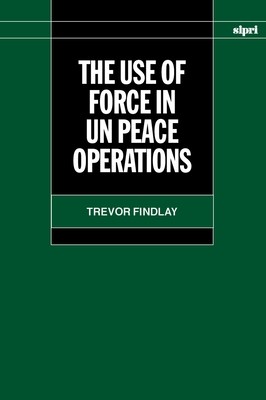
- We will send in 10–14 business days.
- Author: Trevor Findlay
- Publisher: Stockholm International Peace Research Institute
- ISBN-10: 0198292821
- ISBN-13: 9780198292821
- Format: 16.5 x 23.9 x 3.1 cm, kieti viršeliai
- Language: English
- SAVE -10% with code: EXTRA
Reviews
Description
One of the most vexing issues that has faced the international community since the end of the Cold War has been the use of force by the United Nations peacekeeping forces. UN intervention in civil wars, as in Somalia, Bosnia and Herzegovina, and Rwanda, has thrown into stark relief the difficulty of peacekeepers operating in situations where consent to their presence and activities is fragile or incomplete and where there is little peace to keep. Complex questions arise in these circumstances. When and how should peacekeepers use force to protect themselves, to protect their mission, or, most troublingly, to ensure compliance by recalcitrant parties with peace accords? Is a peace enforcement role for peacekeepers possible or is this simply war by another name? Is there a grey zone between peacekeeping and peace enforcement? Trevor Findlay reveals the history of the use of force by UN peacekeepers from Sinai in the 1950s to Haiti in the 1990s. He untangles the arguments
about the use of force in peace operations and sets these within the broader context of military doctrine and practice. Drawing on these insights the author examines proposals for future conduct of UN operations, including the formulation of UN peacekeeping doctrine and the establishment of a UN rapid reaction force.
EXTRA 10 % discount with code: EXTRA
The promotion ends in 21d.17:25:17
The discount code is valid when purchasing from 10 €. Discounts do not stack.
- Author: Trevor Findlay
- Publisher: Stockholm International Peace Research Institute
- ISBN-10: 0198292821
- ISBN-13: 9780198292821
- Format: 16.5 x 23.9 x 3.1 cm, kieti viršeliai
- Language: English English
One of the most vexing issues that has faced the international community since the end of the Cold War has been the use of force by the United Nations peacekeeping forces. UN intervention in civil wars, as in Somalia, Bosnia and Herzegovina, and Rwanda, has thrown into stark relief the difficulty of peacekeepers operating in situations where consent to their presence and activities is fragile or incomplete and where there is little peace to keep. Complex questions arise in these circumstances. When and how should peacekeepers use force to protect themselves, to protect their mission, or, most troublingly, to ensure compliance by recalcitrant parties with peace accords? Is a peace enforcement role for peacekeepers possible or is this simply war by another name? Is there a grey zone between peacekeeping and peace enforcement? Trevor Findlay reveals the history of the use of force by UN peacekeepers from Sinai in the 1950s to Haiti in the 1990s. He untangles the arguments
about the use of force in peace operations and sets these within the broader context of military doctrine and practice. Drawing on these insights the author examines proposals for future conduct of UN operations, including the formulation of UN peacekeeping doctrine and the establishment of a UN rapid reaction force.


Reviews